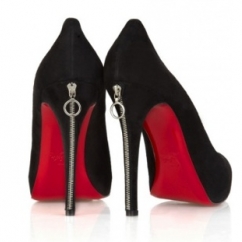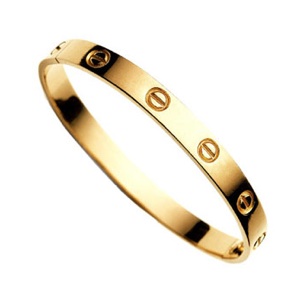Articles and News
HOW TO AVOID A (COPY) CATFIGHT | April 03, 2013 (0 comments)

This is the final installment of a series addressing copyright lawsuits. In the two previous articles we have discussed copyright litigation from the position of the plaintiff, and the defendant. This final installment in the series will address trademark counterfeiting, trade dress, and patent (as opposed to copyright) infringement.
New York, NY--Trademark counterfeiting has become a very extensive international business, and copying in the jewelry industry can sometimes involve the trademarks of others. Some unscrupulous manufacturers intentionally use trademarks of the true owner to hide the copying, assist in sales, and generate quick cash. Many counterfeiters are fairly sophisticated, and the ability to find them, punish them or otherwise stop their activities is often frustrating.
Trade dress infringement. Whereas trademark litigation in the jewelry industry is not very common, trade dress is becoming more so. Trade dress is a rather nebulous area generally directed to those designs that have achieved a degree of secondary meaning; i.e., when an ordinary consumer looks at a design and recognizes its source. Trade dress is being asserted by certain high-end manufacturers suggesting that anyone who copies their jewelry design is infringing on a look that has become solely associated with them. Van Cleef & Arpels, for example, is one company that has been making such assertions.
Christian Louboutin, the luxury shoemaker of red sole fame (example shown top left), is another. You may recall a recent case in New York in which Louboutin claimed the red sole was trade dress for the company. The court agreed, except that it allowed the defendant to use red for the sole when the top of the shoe also was red.
The idea of a red sole seems fairly commonplace, but one party has succeeded in appropriating the design feature from the general public. On the other hand, in order to protect such a feature, a brand must spend millions and millions of dollars promoting the look as its exclusive look, so that ordinary consumers immediately recognize it as such.
The famous Cartier ring and bracelet with a series of screw heads on the outer surface has come to be recognized as a trade dress and trademark of Cartier. Though a simple design, those who sell copies of a ring or bracelet with it are often sued for trademark and trade dress infringement.
Just being involved in litigation is a headache, and can be a serious financial burden. If a party asserting trade dress infringement can make an objectively reasonable case, a court will allow that case to proceed to a trial. Since discovery proceedings in trade dress cases can be very expensive, a defendant can be forced to defend a case that has very little likelihood of success—but will cost so much money that the defendant gives up.
But it’s critical to look at your insurance policy to see if you have coverage in the event of a trade dress case against you. Trade dress is more likely to be covered by [business] insurance policies than other types of IP disputes.

The signature screw-head design of Cartier's "Love" bracelet has come to be recognized as trade dress for the jewelry house.
Patents. Patent litigation is very technical, while copyright, trade dress, or trademark litigation is far easier for a layperson to understand.
Design patents last for 14 years. They are relatively expensive to obtain compared to simply registering copyrights, and a defense to design patent infringement is that the patent is invalid for prior art. A prior art defense in copyright infringement is not generally available, since if an author creates an original design, a second party is not allowed to copy that design even if the author was not the first in the world to have ever created that design. The copier is not allowed to copy, but if he or she can show it was copied from a pre-existing design, then prior art is relevant.
For design patents, all a defendant need show is that the design existed before the patent owner claimed to have created it. That is not as difficult a burden, but design patent litigation also is relatively expensive. Here again, since design patents last only 14 years, it is a relatively limited protection medium, relatively expensive, and not easy to enforce without expending significant sums.
Finally, let’s address utility patents, otherwise known as regular patents. Utility patents involve the more mechanical aspects of jewelry design production and techniques. Though there was a relatively recent case involving patent infringement for laser printing on stones, this kind of patent litigation in the jewelry industry is not frequent.

Attorney Peter Berger
In our firm, we do obtain patents for clients regularly, for techniques and systems that improve the product and make manufacturing more economical. Patent litigation is also quite expensive, involving issues of prior art and infringement.
The issue of infringement is somewhat technical because it involves the portion of a patent known as claims. In order to infringe patent claims one has to have each of the elements in the claims. Each word in it has great meaning, and patent litigation can involve a lot of effort arguing about the meaning of individual words.
Understanding your role as the client. While litigation is its own process, the ultimate conclusion of right or wrong is relatively simple to understand: Are the designs substantially similar? Are the trademarks confusingly similar? Has the defendant copied another design? If you do not understand what your lawyer is talking about when it comes to copyright, trademark, or trade dress litigation, keep asking questions. In general, for most IP litigation, you should know and understand what is going on and don’t rely on “leave it to my lawyer” as your way to conduct litigation. It will be more expensive and more frustrating if you do not actively participate in things that affect your business.
There is usually nothing that complicated in these areas of litigation, and a client who understands what the lawyer is dealing with is in a better position to help the lawyer achieve whatever objective is sought.
Attorney Peter Berger, of Levisohn Berger LLP, has been actively involved in the jewelry industry for almost 40 years, specializing in intellectual property (copyright, trademark, and patent law) as well as other legal issues. He has developed a special appreciation for how members of the industry integrate legal issues in their business activities. The New York-based firm may be reached at (212) 486-7272.







